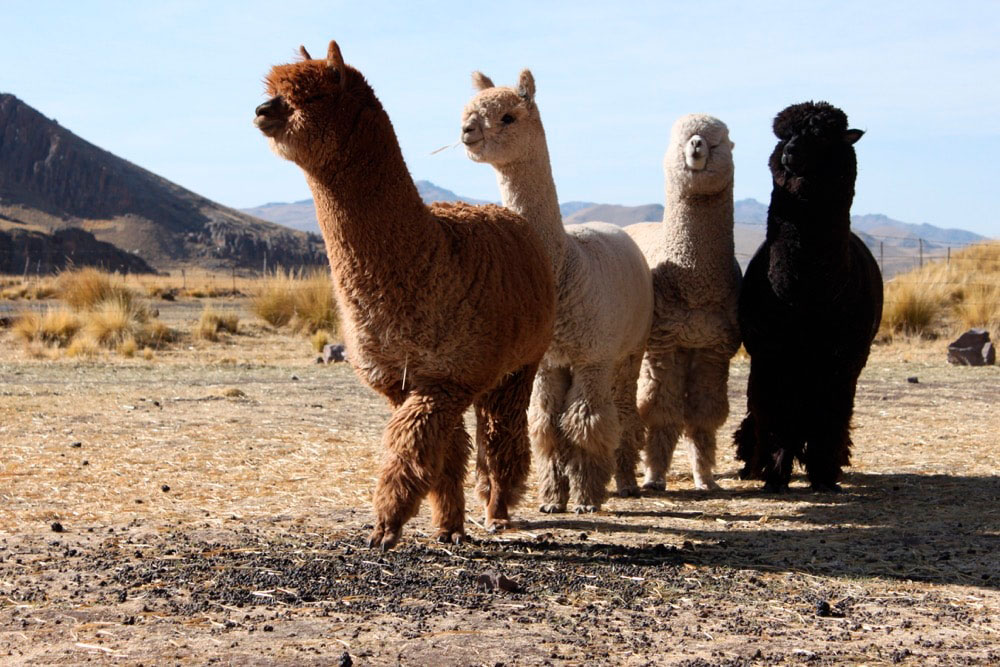SOUTH AMERICAN CAMELIDS: HUACAYO ALPACA (PART 1 OF 5)

Those of us living in the US and searching the web in English can get a skewed perspective of the alpaca population. While there are numerous websites promoting alpaca farming in the US, 3.5 million animals, or more than 75% of the alpaca population, reside in the Peruvian Andes. Most of the rest can be found in Bolivia and Chile. Only a small fraction of alpacas (in the tens of thousands) are being raised in the US.
Alpacas are smaller than llamas and larger than their wild brethren the Vicuna and Guanaco. Huacayo is the most common of the two types of alpaca, making up more than 90% of the global Alpaca population. What makes the Huacayo distinct from the Suri alpaca is it has short, curly and fluffy fiber that covers almost all of its body leaving only its face and legs covered with short hair. They are often referred to as the “Teddy Bear” alpacas.
Don’t let their cuddly looks fool you, one of the reasons Huacayo make up more than 90% of the alpaca population is their hardiness.
They’re easier to keep healthy than the Suris. The short, dense Huacayo fiber that’s sheared annually from the animals is ideal for the production of yarn. It’s generally easier to work with than the Suri fiber.
Domesticated, gentle, hardy, long-lived, cuddly, and with marvelous natural fibers that are easy to work with - no wonder the Huacayo make up the majority of the alpaca world.
If you are interested in viewing or products click here.
Follow us on Facebook and Instagram!


Comments
Leave A Reply
Your email address will not be published.